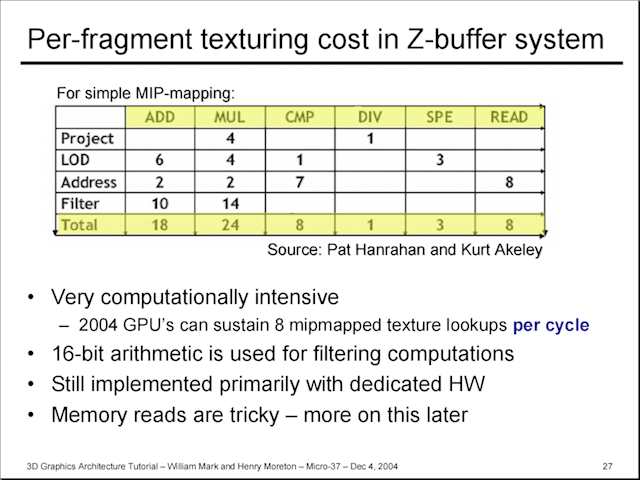vertex_shader
Banned
Open the large version of the photo and look at the title...
"ATi Radeon HD 2600 (RV630) (Bild 1/1)"
Still not say its the XT
Open the large version of the photo and look at the title...


One of the above cards has a 256-bit bus. The other one has a 128-bit bus. Both have 128MB of RAM. Using you bus width-to-PCB length correlation formula, would you please tell me which one is which?
The addressing unit takes the texture coordinates of a quad as input, as well as their pos.w value for perspective correction, I believe. Based on that, it determines what samples need to be fetched and what their weights are.Can anyone explain what exactly is calculated by a texture addressing unit?
The funny thing is that the RV630XT has a power consumption of 128W, while the 8600GTS is numbered 47W according to xbitlabs.
LinkATI RV630 may follow in G84's footsteps
The addressing unit takes the texture coordinates of a quad as input, as well as their pos.w value for perspective correction, I believe. Based on that, it determines what samples need to be fetched and what their weights are.

Radeon HD2600 received great attention to the performance,We have seen from the above information on the performance of his initial,but We know that Radeon HD2600 series will be released in May.


From the back, 128bit is practically a given.
Arun, I think, turned this up the other day:
http://www-csl.csres.utexas.edu/use...ics_Arch_Tutorial_Micro2004_BillMarkParts.pdf
I presume that's a trilinear filtering operation being described there.
It would seem the TA unit in G8x consists of Project, LOD and Address.
LinkAccording to the author, it is saiid that the board uses 256MB of GDDR4. The 65nm manufacturing process GPU comes with a BIOS dated Apr 4th. Max wattage is 80W or lower. There is no additional power connector unlike the NVIDIA 8600GTS. In one of the 1080P video tests, cpu utilisation is lower than 5% on the average. That is amazing.
The PCI-SIG won't validate it if it honestly could ask for > 75W from the slot at any time. So you're probably right.Hmm, the power is down, but 80W would still require extra power, wouldn't it? Unless the person saying 80W is guesstimating from measurements at the wall or something.
